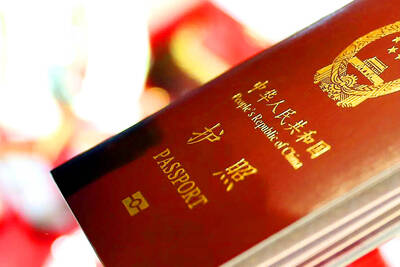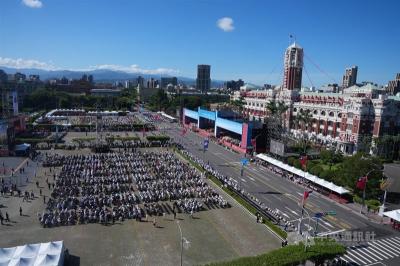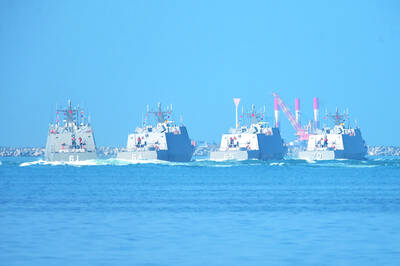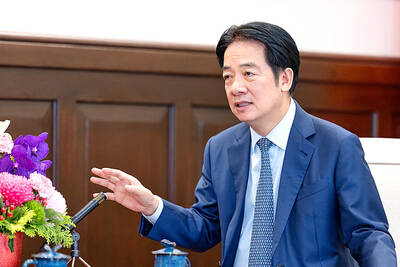The latest telephone survey conducted by National Chengchi University from March 30 to April 2 and released by the Mainland Affairs Council (MAC) shows that about 8 percent of respondents supported “maintaining the status quo and seeking unification at a later date” and 1.5 percent supported “unification at the earliest possible opportunity.”
In other words, less than 10 percent of respondents supported unification with China, suggesting that more than 90 percent of Taiwanese do not support unification.
The poll also found that nearly 30 percent of respondents said the “status quo” should be maintained in perpetuity, an increase on previous polls. In addition, 32.4 percent of respondents said that the “status quo” should be maintained with any decision on unification left to the future — the lowest level of support for that option since the poll was first commissioned by the council, suggesting that people have a clearer idea about relations with China.
The poll was conducted after former Chinese Nationalist Party (KMT) chairman Wu Poh--hsiung (吳伯雄) visited Beijing and proposed the “one country, two areas (一國兩區)” concept during a meeting with Chinese President Hu Jintao (胡錦濤).
The council occasionally conducts polls on the issues of unification and independence, which gives respondents a number of options to choose from: “maintaining the status quo and making a decision later,” -“maintaining the status quo in perpetuity,” “maintaining the status quo and declaring independence later,” “maintaining the status quo and seeking unification at a later date,” “declaring independence as soon as possible” and “seeking unification at the earliest possible opportunity.”
The poll is intended as a reference point on public opinion toward the issue of independence and unification.
In the latest poll, 32.4 percent of respondents supported “maintaining the status quo and making a decision later,” 29.9 percent chose “maintaining the status quo in perpetuity,” 15.7 percent believed that Taiwan should “maintain the -status quo and declare independence later,” 8.2 percent favored “maintaining the status quo and seeking unification at a later date” and 6.1 percent wanted to declare independence as soon as possible, while only 1.5 percent wanted to seek unification at the earliest possible opportunity.
As for the pace of cross-strait exchanges, the poll showed that 45 percent of Taiwanese think they are just right, while 32.6 percent think they are developing too quickly.
Compared with the previous poll in which 48.1 percent believed they were just right and 25.7 percent said they were too fast, the results of the latest poll suggested that Taiwanese are worrying more about the pace of cross-strait exchanges.
Although Beijing has granted economic favors to Taiwan since President Ma Ying-jeou (馬英九) took office in 2008, 49.7 percent of respondents said that the Chinese government has behaved in an unfriendly way toward the Taiwanese government, while 33 percent believe that Beijing has been friendly.
On the other hand, 45.7 percent of respondents said that the Chinese government was unfriendly to Taiwanese, while 38.5 percent said Beijing was friendly.
The survey had 1,079 samples with a margin of error of plus or minus 2.98 percentage points.

The Ministry of the Interior (MOI) is to tighten rules for candidates running for public office, requiring them to declare that they do not hold a Chinese household registration or passport, and that they possess no other foreign citizenship. The requirement was set out in a draft amendment to the Enforcement Rules of the Public Officials Election and Recall Act (公職人員選舉罷免法 ) released by the ministry on Thursday. Under the proposal, candidates would need to make the declaration when submitting their registration forms, which would be published in the official election bulletin. The move follows the removal of several elected officials who were

The Republic of China (ROC) is celebrating its 114th Double Ten National Day today, featuring military parades and a variety of performances and speeches in front of the Presidential Office in Taipei. The Taiwan Taiko Association opened the celebrations with a 100-drummer performance, including young percussionists. As per tradition, an air force Mirage 2000 fighter jet flew over the Presidential Office as a part of the performance. The Honor Guards of the ROC and its marching band also heralded in a military parade. Students from Taichung's Shin Min High School then followed with a colorful performance using floral imagery to represent Taiwan's alternate name

FOUR DESIGNATED AREAS: Notices were issued for live-fire exercises in waters south and northwest of Penghu, northeast of Keelung and west of Kaohsiung, they said The military is planning three major annual exercises across the army, navy and air force this month, with the navy’s “Hai Chiang” (海強, “Sea Strong”) drills running from today through Thursday, the Ministry of National Defense said yesterday. The Hai Chiang exercise, which is to take place in waters surrounding Taiwan, would feature P-3C Orion maritime patrol aircraft and S-70C anti-submarine helicopters, the ministry said, adding that the drills aim to bolster the nation’s offshore defensive capabilities. China has intensified military and psychological pressure against Taiwan, repeatedly sending warplanes and vessels into areas near the nation’s air defense identification zone and across

COVETED PRIZE: The US president would be a peace prize laureate should he persuade Xi Jinping to abandon military aggression against Taiwan, William Lai said US President Donald Trump should get the Nobel Peace Prize should he be able to convince Chinese President Xi Jinping (習近平) to abandon the use of force against Taiwan, President William Lai (賴清德) told a conservative US radio show and podcast in an interview. The US is Taiwan’s most important international backer, despite the absence of formal ties, but since Trump took office earlier this year he has not announced any new arms sales to the nation. Trump could meet Xi at the APEC summit in South Korea on Oct. 31 and Nov. 1. Lai, speaking on The Clay Travis and Buck Sexton